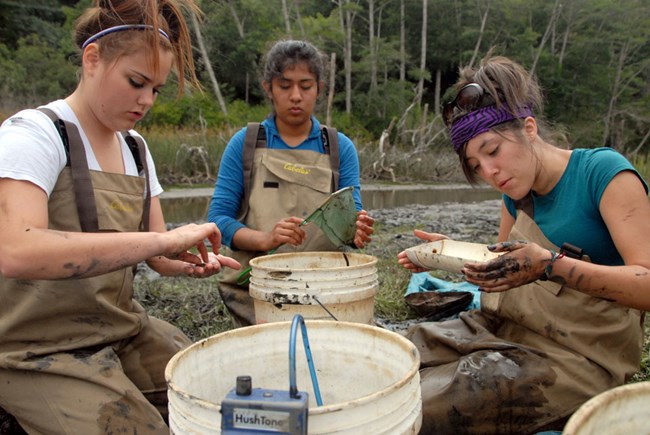
Jessica Weinberg McClosky / NPS
Science at the Seashore
Hands-On Science Education Programs for Middle & High School Students
Teachers may schedule one of three experiential field programs led by Point Reyes National Seashore Association (PRNSA) staff. One day Science at the Seashore programs are also available to teachers who have not reserved the Clem Miller Environmental Education Center.
- Giacomini Wetlands Field Study - Students practice water quality monitoring, aquatic macroinvertebrate sampling and shorebird surveys to understand wetland ecology and restoration. Contact PRNSA to make a reservation.
- LiMPETS (Long-term Monitoring Program & Experiential Training) - Students are trained to survey the distribution and abundance of the Pacific Mole Crab (Emerita analoga) on Limantour Beach. Contact PRNSA to make a reservation.
- Marine Debris Action Team - Students conduct plastic pollution density studies on local beaches using National Oceanic & Atmospheric Administration scientific protocol. Contact PRNSA to make a reservation.
For more information about Science at the Seashore: Giacomini Wetlands, visit the Giacomini Wetland Restoration Project's Science at the Seashore webpage.
Science Lectures
Please join Point Reyes National Seashore staff for Science Lectures, PCSLC-sponsored 45 minute presentations on scientific research being performed at Point Reyes and elsewhere in the California. They usually occur at noon on many Thursdays throughout the year and are normally held at the Red Barn Classroom at Point Reyes National Seashore's Headquarters. All are welcome and admission is free.
Last updated: September 19, 2016
